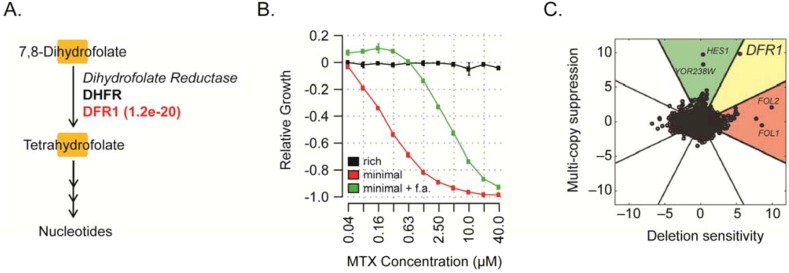Figure 4.
The anti-metabolite cancer drug methotrexate (MTX) inhibits dihydrofolate reductase in yeast. (A) Dihydrofolate reductase converts dihydrofolate to tetrahydrofolate. Homology (BLAST E value) between the human enzyme (black) and the yeast enzyme (red) is indicated in parentheses. (B) Folinic Acid (i.e., leucovorin) rescues MTX-induced toxicity in yeast. Relative growth (y-axis), the MTX-induced growth inhibition relative to the “no-drug” control, was measured at a variety of MTX concentrations (x-axis) and calculated as described in [30]. Plotted are the mean of three biological replicates. Error bars represent the standard deviation. Relative growth of JHY222 [103] was measured in rich (yeast extract, peptone, glucose) media (black), minimal (yeast nitrogen base plus glucose) media (red), and minimal media plus folinic acid (green). (C) Chemogenomic profiling identifies yeast Dfr1 as the target of MTX. MTX-sensitivity of deletion strains is plotted on the x-axis, and MTX-resistance of multi-copy clones on the y-axis. Reproduced with permission from Hoon et al. [50].

